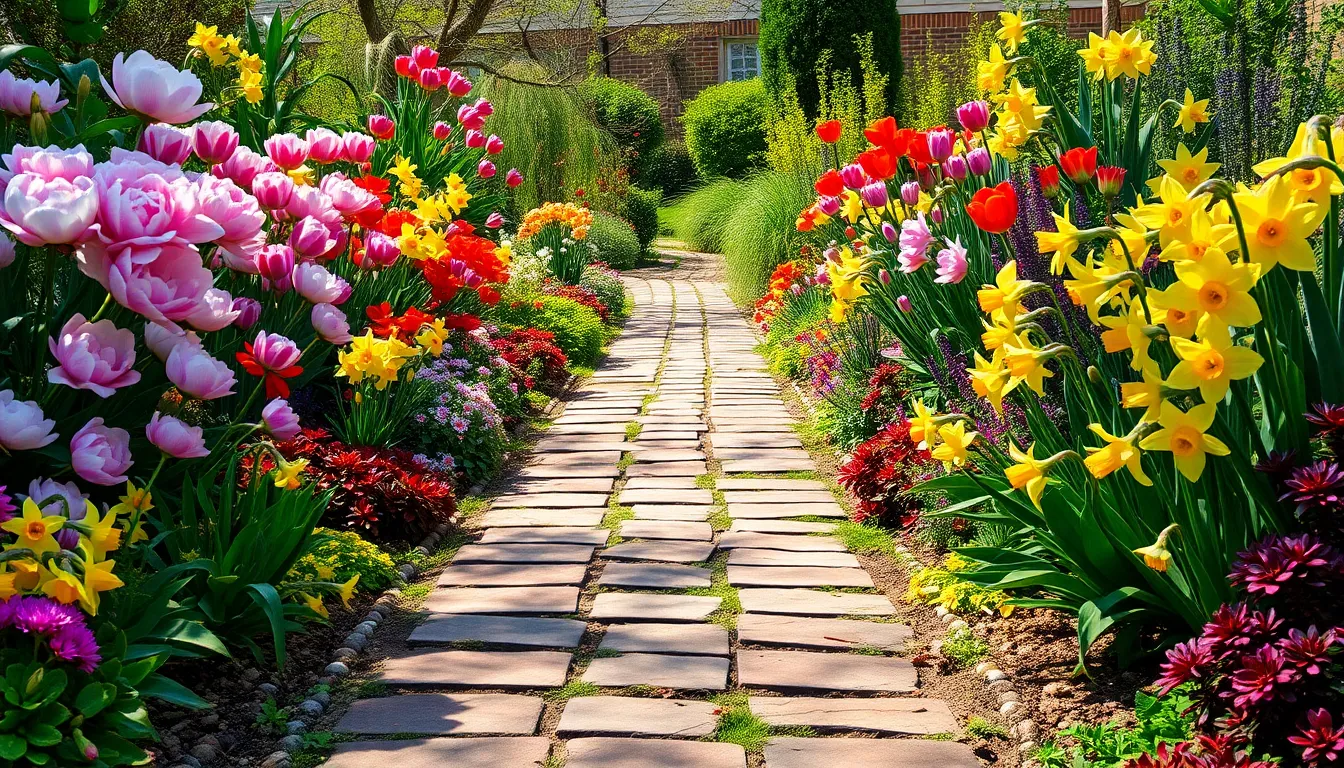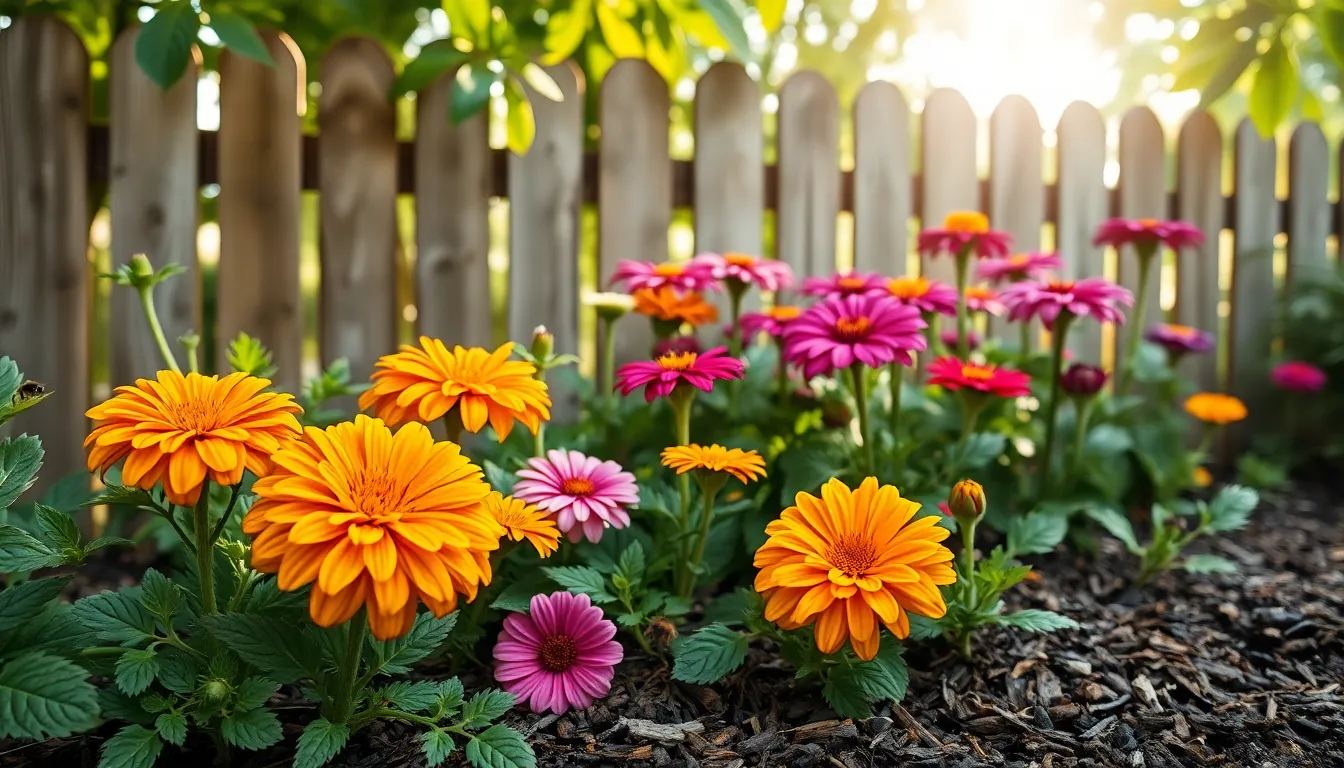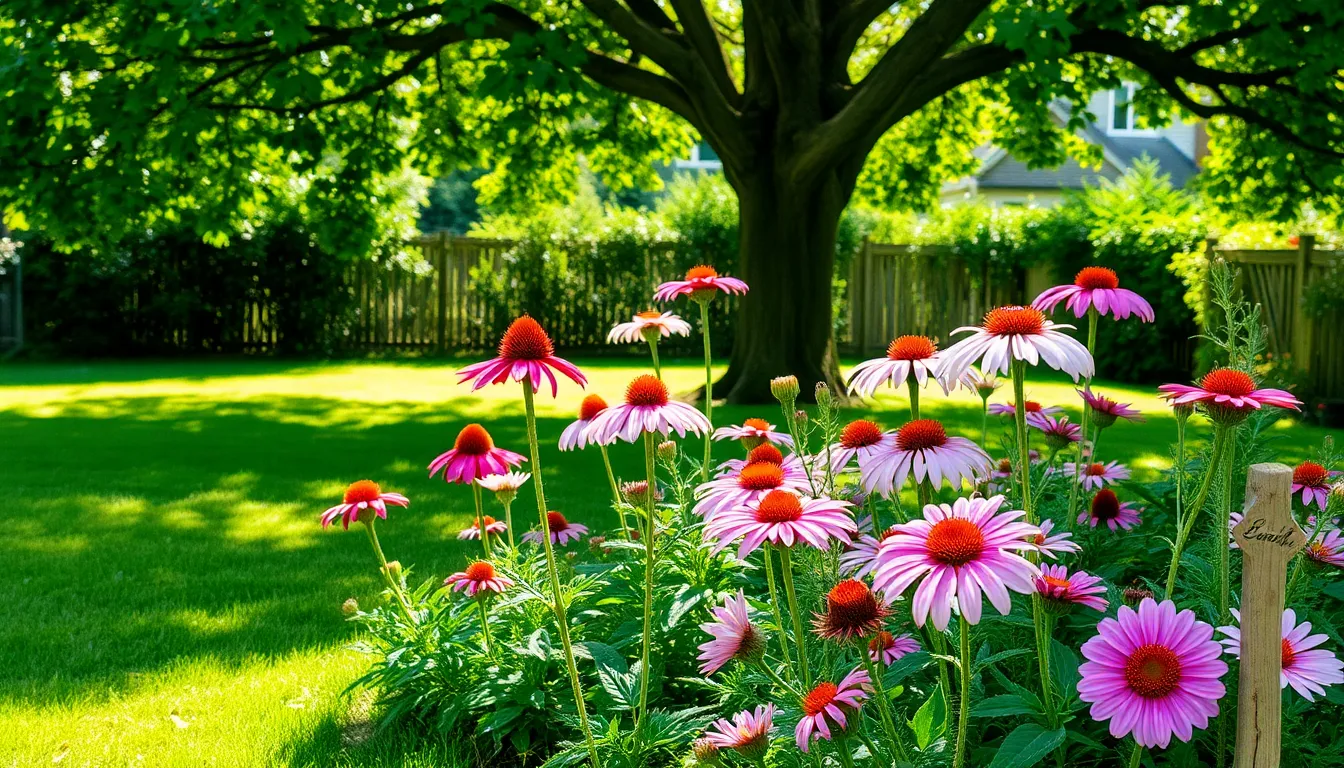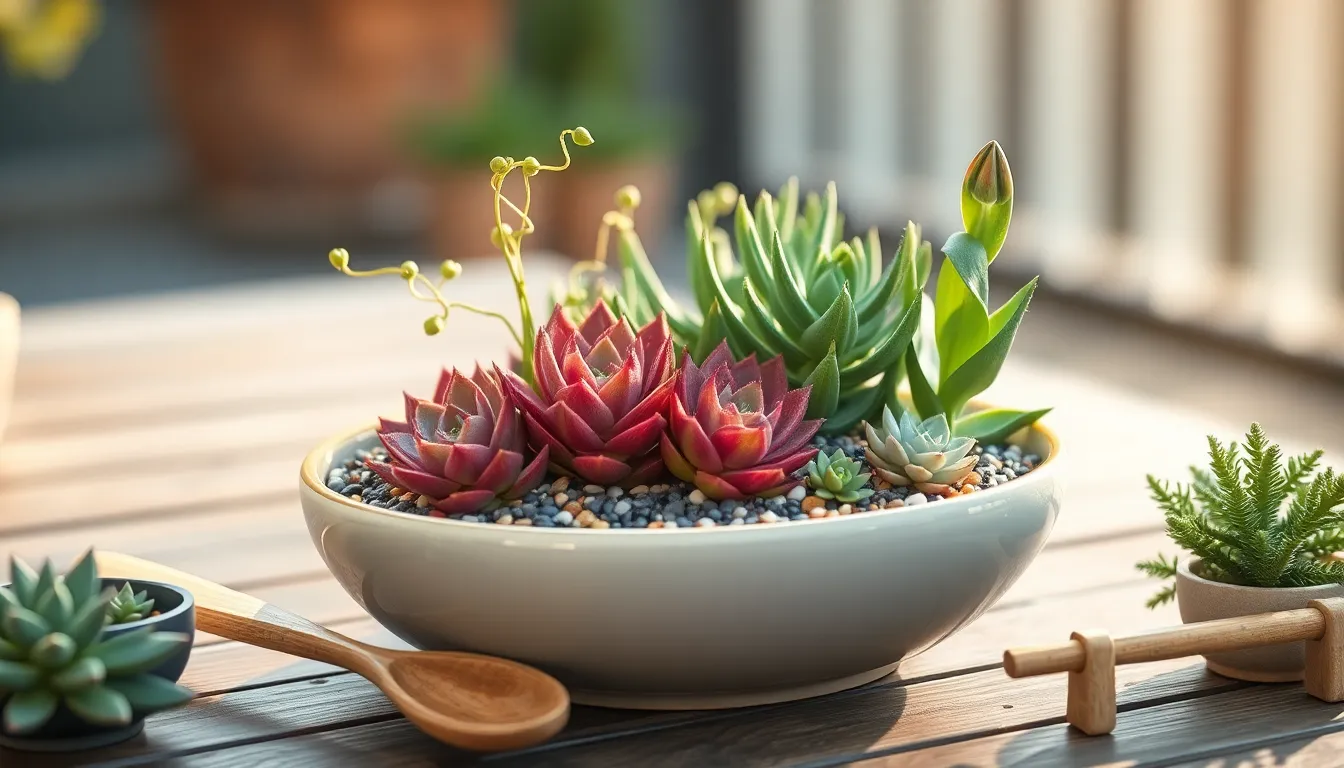Spring is a magical time for gardeners, a season when the world comes alive with vibrant colors and the promise of new beginnings. Whether you’re planting your very first flower bed or you’re a seasoned pro with years of experience, selecting the right flowers to plant during this time can set the stage for a truly stunning garden. By choosing the right blooms, you can create a tapestry of colors and fragrances that will transform your outdoor space into a personal paradise.
In this article, we’ll guide you through twelve breathtaking flowers that thrive when planted in spring, each bringing its own unique charm and character to your garden. From the delicate grace of the classic daffodil to the bold hues of the zinnia, there is something here for every gardener’s taste and skill level. As you read on, you’ll discover not only which flowers to plant but also tips and tricks on how to care for them, ensuring that your garden flourishes throughout the season.
Dive into the world of spring gardening with us, and let’s explore how you can cultivate a garden that bursts with life and beauty. You’ll gain insight into the ideal planting conditions and learn how to nurture each flower so that they bloom to their fullest potential. Whether your garden is a sprawling landscape or a cozy balcony, these twelve flowers will bring joy, satisfaction, and a touch of nature’s splendor to your space.
Top Spring Flower Choices
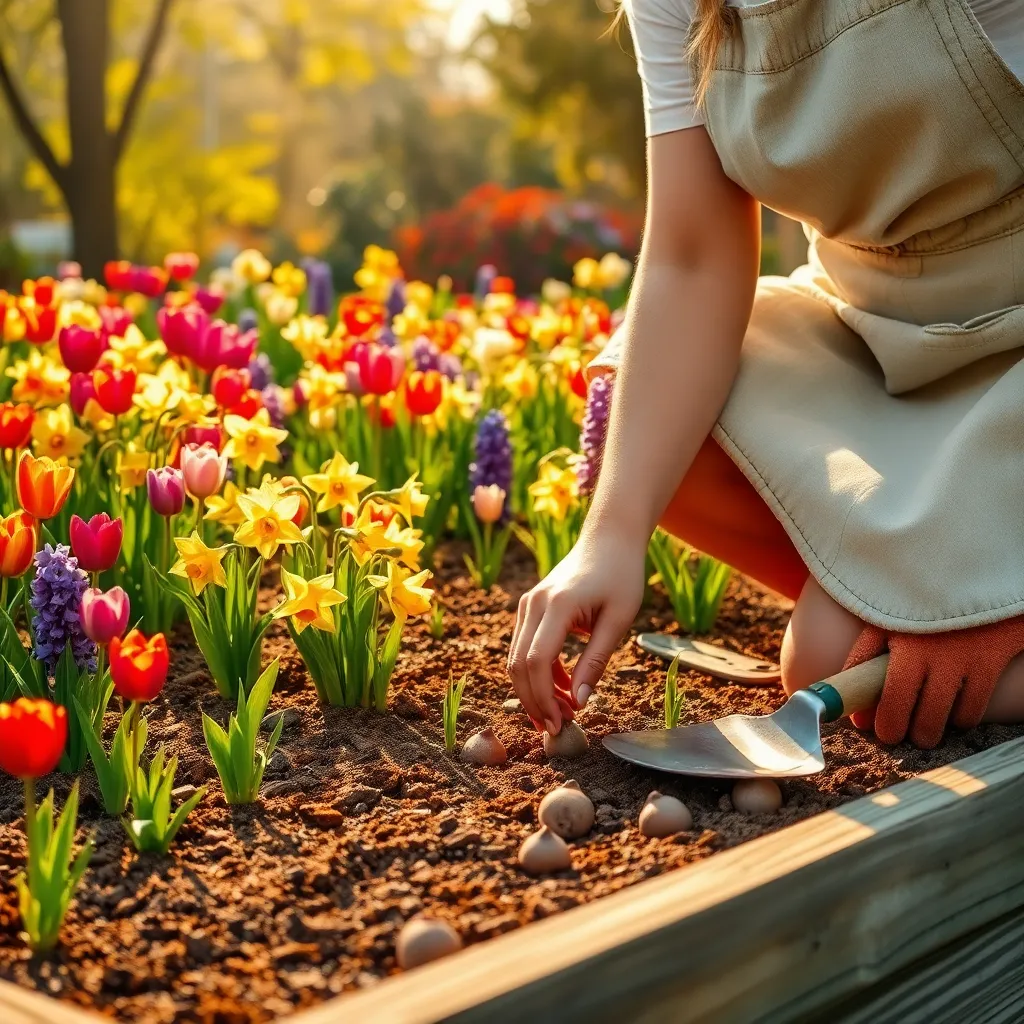
Spring is an ideal time to plant tulips, which add vibrant color to any garden. They thrive best in well-drained soil and require planting at a depth of about three times the height of the bulb.
For an early burst of color, daffodils are an excellent choice. They prefer a sunny spot and should be planted in clumps to create a natural, eye-catching display.
Incorporating pansies in your spring garden can provide both color and a touch of elegance. These flowers are hardy and enjoy cool weather, making them perfect for the fluctuating temperatures of spring.
Consider adding lilies for their stunning and fragrant blooms. Ensure lilies are planted in well-drained soil with access to full sun or partial shade.
Beginner gardeners will find marigolds easy to grow, as they are adaptable to various soil types. They require regular watering but are generally low-maintenance, making them a perfect addition to any garden.
Advanced gardeners might experiment with planting hyacinths, known for their intoxicating scent. They need a period of cold dormancy, so planting them early in the spring ensures optimal blooming come late spring.
For a touch of sophistication, include bleeding hearts in shady areas of your garden. They flourish in moist, well-drained soil and are excellent for adding texture and interest to darker garden corners.
Dazzling Daffodils Delight Gardens
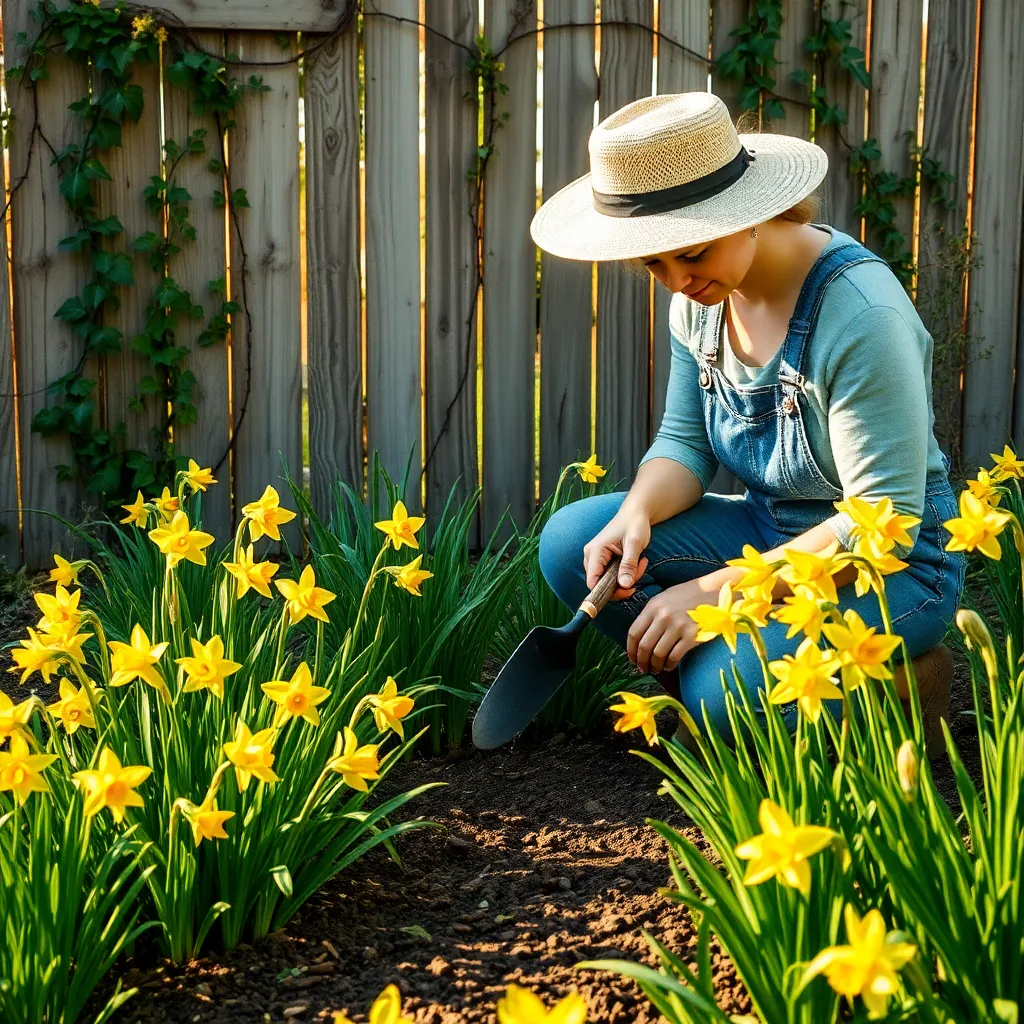
Daffodils are a quintessential spring flower, known for their bright, trumpet-shaped blooms that herald the arrival of warmer days. To ensure a stunning display, plant daffodil bulbs in the fall, about 4-6 inches deep, in a location that receives full to partial sunlight.
Choose well-draining soil to prevent bulb rot, which can be achieved by mixing sand or perlite into your planting area if necessary. Water the bulbs thoroughly after planting and then sparingly during the winter months to avoid waterlogging.
For beginners, remember that daffodils are relatively low-maintenance and can naturalize over time, providing years of enjoyment with minimal effort. Once the flowers fade, resist the urge to cut the foliage back immediately; allow the leaves to die back naturally to nourish the bulbs for the next season.
Experienced gardeners might consider experimenting with different daffodil varieties, such as the petite ‘Tête-à-Tête’ or the fragrant ‘Thalia’, to add diversity to their garden’s spring palette. Additionally, planting in clusters rather than single rows can create a more dramatic and cohesive effect.
Captivating Crocus Varieties
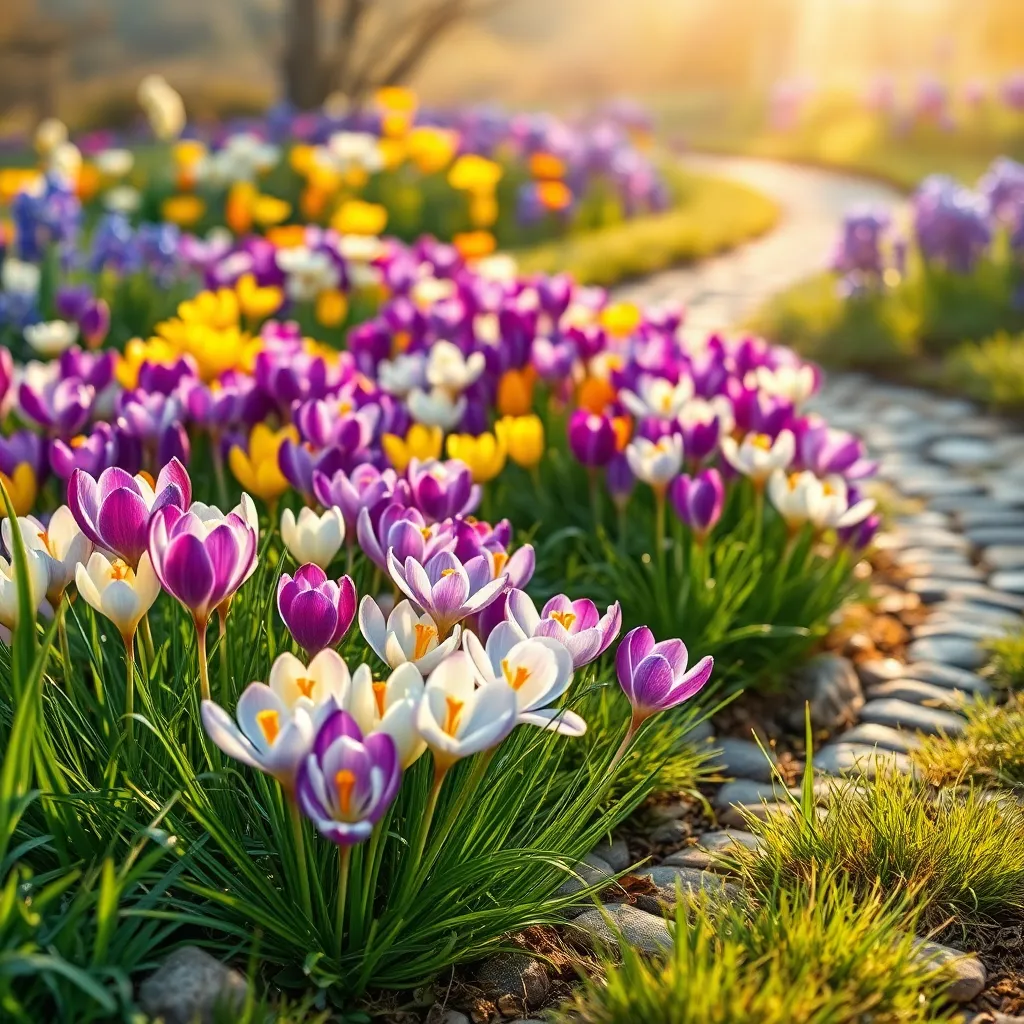
Known for their vibrant colors and early bloom, crocuses are a delightful addition to any spring garden. These charming flowers thrive in well-drained soil and require full sun to partial shade to truly flourish.
When planting crocuses, it’s essential to bury the bulbs about 3-4 inches deep to protect them from frost. Space them 3 inches apart to allow room for growth and prevent overcrowding, ensuring a more spectacular display.
Water the bulbs thoroughly after planting and then let nature take its course; crocuses are quite drought-tolerant once established. As these flowers are among the first to appear in spring, they offer critical early-season nectar for pollinators.
Advanced gardeners may try naturalizing crocuses by scattering bulbs across a lawn or meadow area. This technique allows them to multiply over time, creating a stunning carpet of color that returns year after year with minimal maintenance.
Irresistible Iris Inspirations
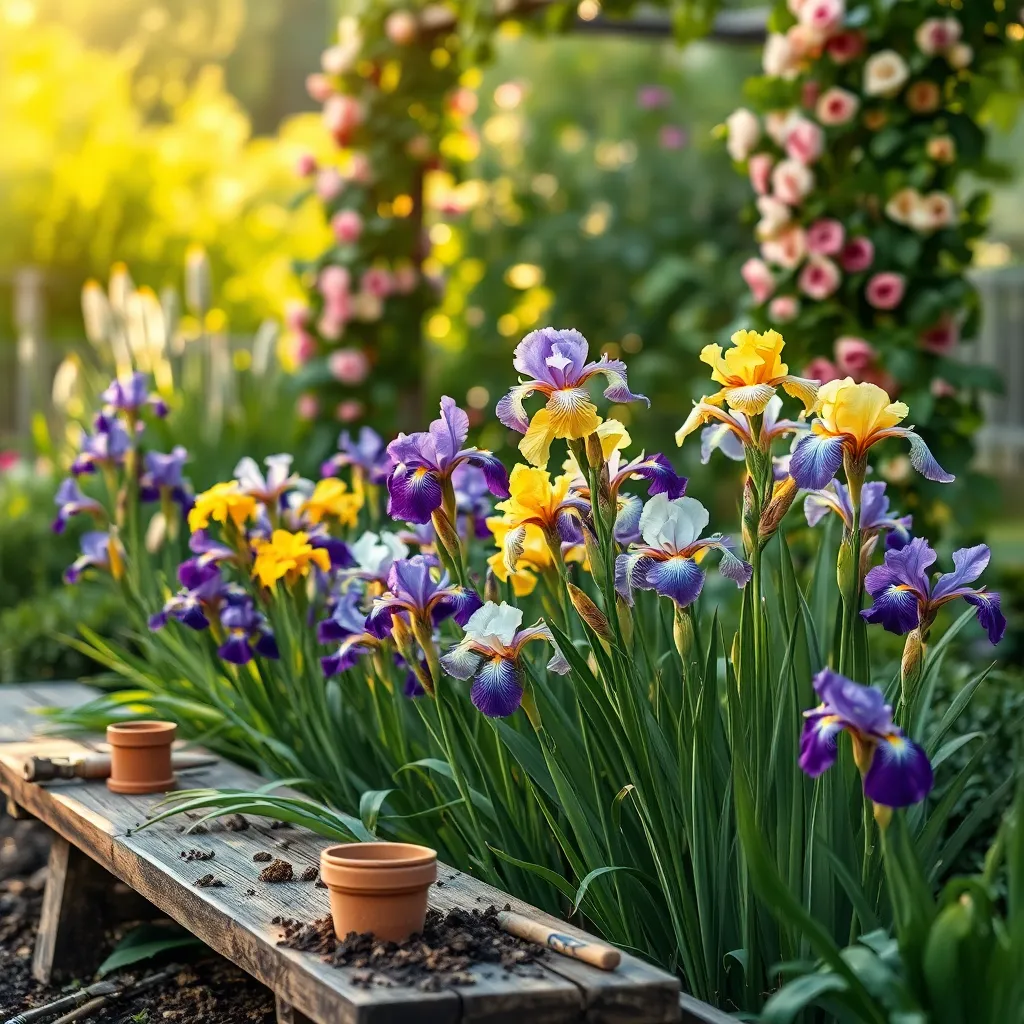
The iris, with its striking colors and diverse forms, is a must-have for any spring garden. Ensure success by planting irises in well-draining soil, as they are prone to root rot if left in overly wet conditions.
When selecting a planting site, choose an area with full sun to partial shade to maximize blooms. Plant rhizomes shallowly, just beneath the soil surface, to allow the crown to bask in sunlight and reduce the risk of rot.
Water your irises judiciously, providing moisture when the top inch of soil feels dry. To encourage robust growth, consider adding a low-nitrogen fertilizer in early spring and again after blooming, but avoid over-fertilizing to prevent excessive foliage with fewer flowers.
For those looking to expand their collection, dividing irises every three to five years not only rejuvenates the plants but also increases your stock. Dig up the clump, gently separate the rhizomes, and replant the healthiest pieces to ensure continued vitality and blooms.
Lovely Lilies for Lushness
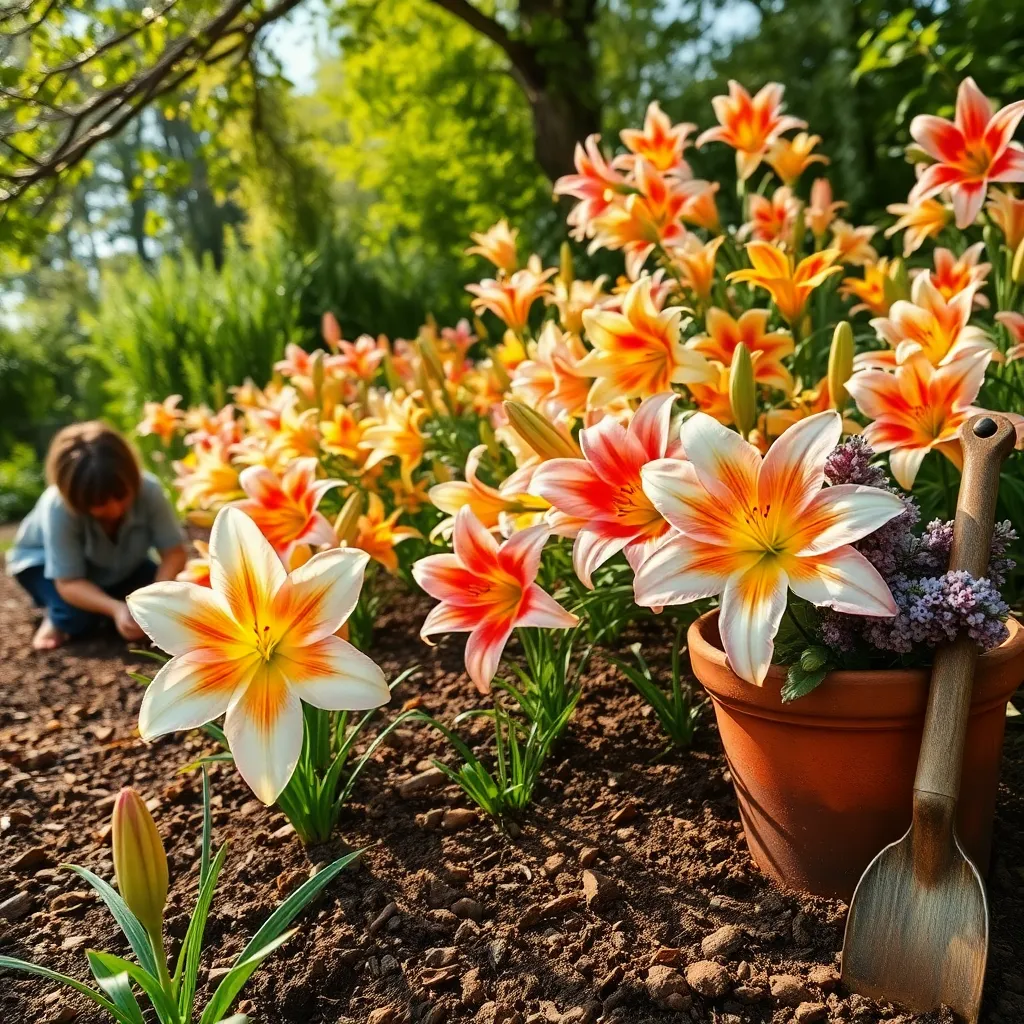
Among the most captivating blooms, lilies bring elegance and lushness to any garden. These perennials thrive in well-drained soil enriched with organic matter, making them a practical choice for gardeners seeking low-maintenance beauty.
For optimal growth, lilies require at least six hours of direct sunlight daily. To ensure your lilies remain healthy and vibrant, water them moderately—keeping the soil consistently moist but not waterlogged is key.
Consider planting lilies in groups of three or more bulbs for a more pronounced visual impact. When planting, space the bulbs about 8 to 12 inches apart and bury them around 6 inches deep to accommodate their growth needs.
For the more experienced gardener, try experimenting with different lily varieties, such as Asiatic, Oriental, or trumpet lilies, to add diversity to your garden. Additionally, applying a balanced fertilizer in the early spring can encourage vigorous growth and more abundant blooms.
Vibrant Tulips Transform Spaces
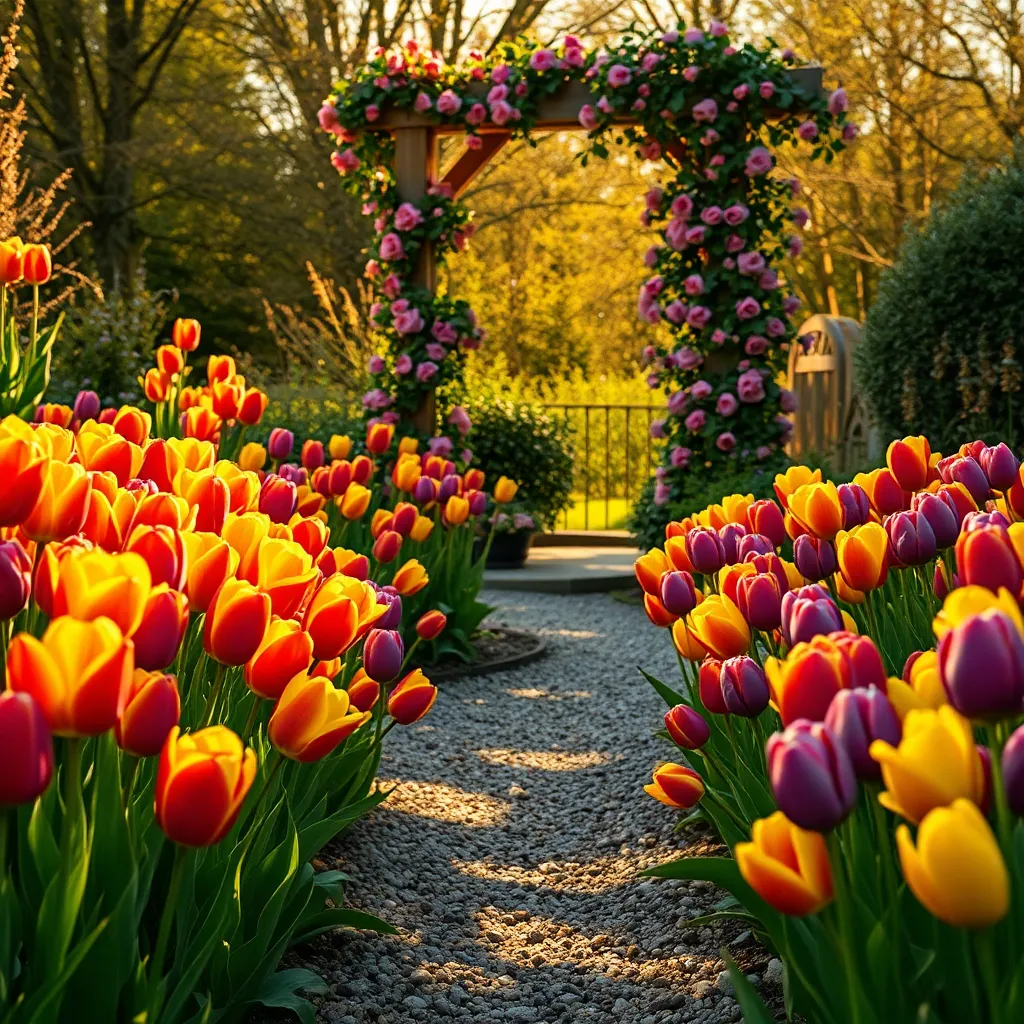
Planting tulips in spring can bring a burst of color to any garden, transforming spaces with their vibrant hues. To get started, select a sunny spot with well-drained soil, as tulips thrive best in these conditions.
Soil preparation is key to successful tulip growth. Work in some organic matter, such as compost or well-rotted manure, to improve soil fertility and drainage.
When planting tulip bulbs, ensure they are placed about 6 to 8 inches deep with the pointed end facing upwards. Spacing the bulbs 4 to 6 inches apart will allow them room to grow and create a lush display.
Water the bulbs thoroughly after planting to help them establish roots. Once they start growing, ensure they receive about an inch of water per week, adjusting for rainfall.
For more advanced gardeners, consider layering different varieties with varying bloom times to extend the display. This technique, known as “lasagna planting,” can create a stunning visual effect from early to late spring.
Charming Cherry Blossoms Bloom
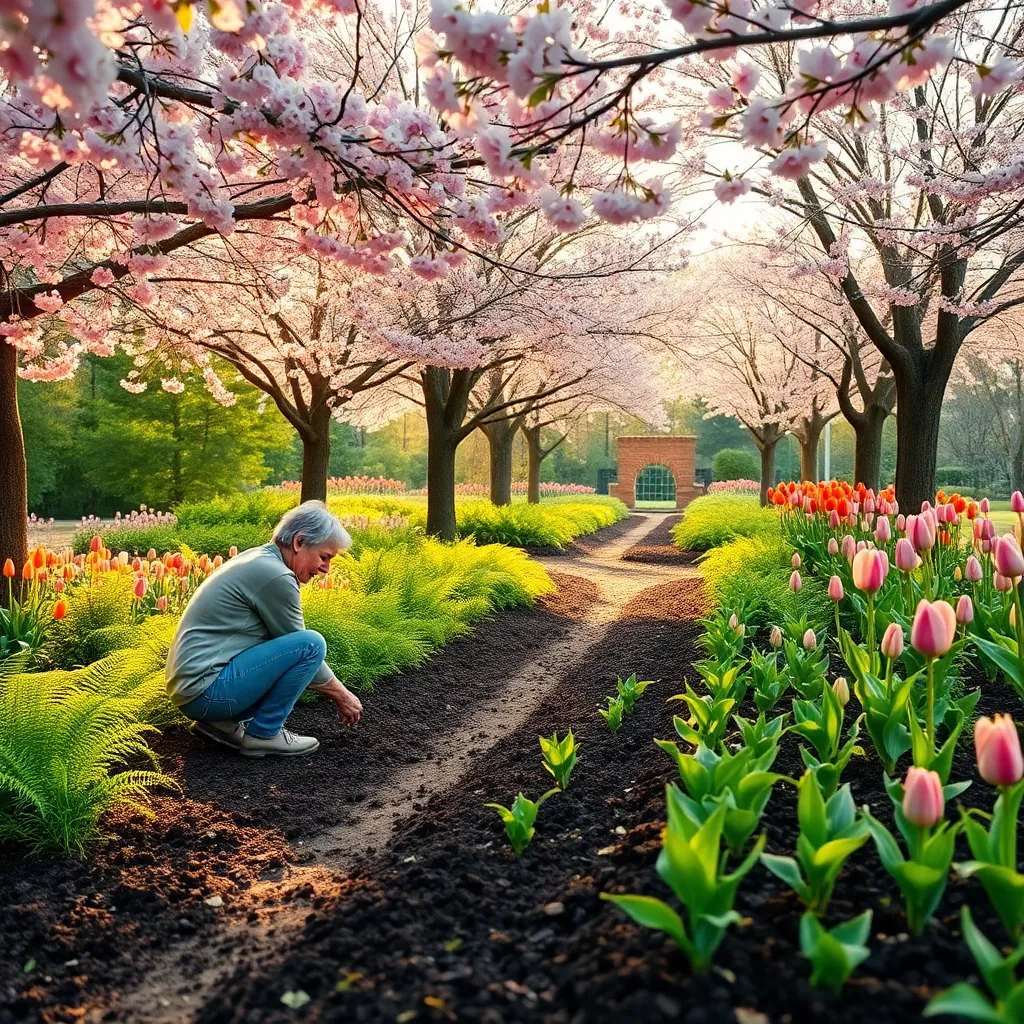
Cherry blossoms are a stunning choice for spring gardens, offering a breathtaking display of delicate pink and white flowers. To successfully grow cherry blossoms, it’s essential to plant them in a location with full sun and well-draining soil.
Optimal growth can be achieved by ensuring the soil is slightly acidic, with a pH ranging from 6.0 to 7.0. If your soil is not naturally acidic, consider adding organic matter such as pine needles or compost to adjust the pH.
Watering is crucial, particularly during the first growing season, to help the tree establish itself. Water deeply and consistently, especially during dry spells, but avoid waterlogging the roots, which can lead to rot.
For those looking to enhance the health and beauty of their cherry blossom trees, consider applying a balanced fertilizer in early spring before the buds open. Pruning is another important task; remove any dead or diseased wood in late winter or early spring to promote vigorous growth and an abundance of blooms.
Elegant Azaleas Add Appeal
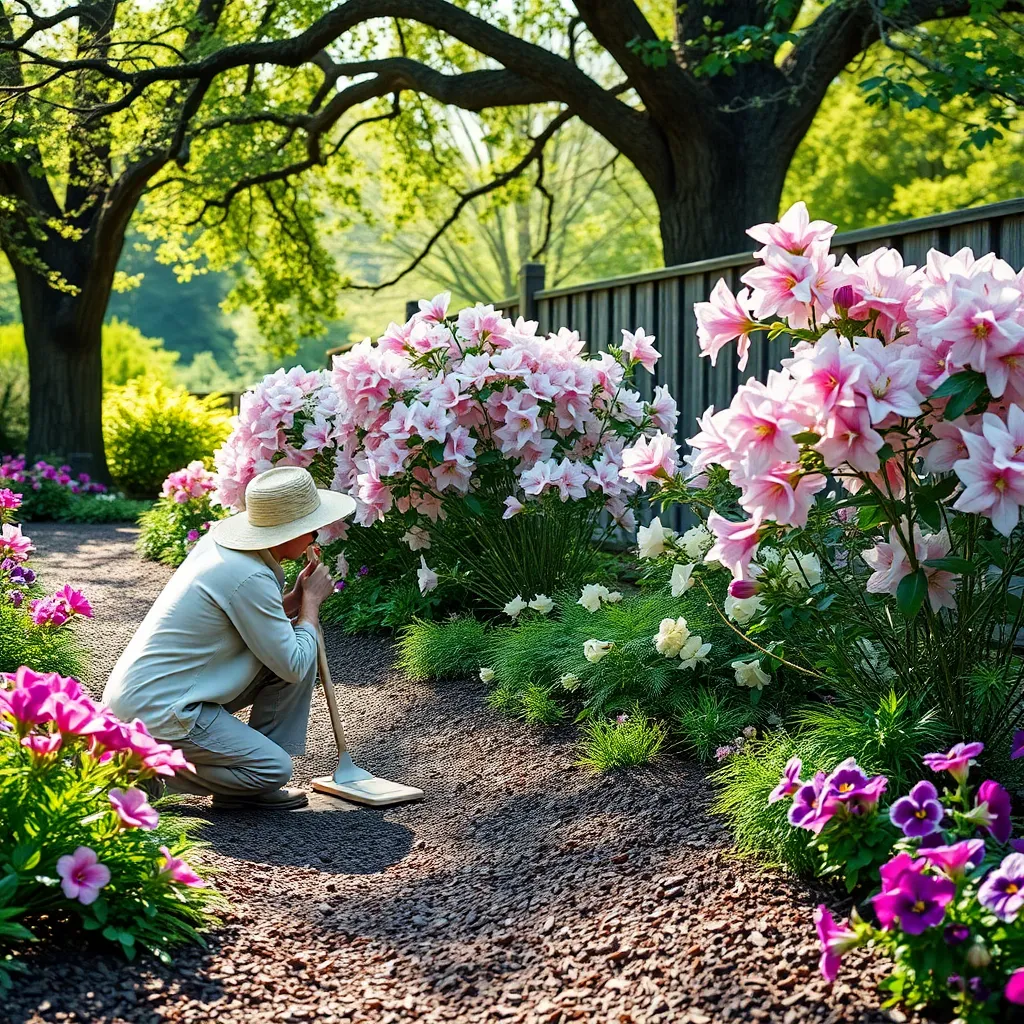
Azaleas are renowned for their stunning blooms and can transform a garden with their vibrant colors. To thrive, azaleas require acidic, well-drained soil; consider using a soil pH test kit to ensure your garden meets these conditions.
Plant azaleas in a location that offers dappled shade, as too much sunlight can scorch their leaves. For best results, water them consistently, keeping the soil moist but not waterlogged to prevent root rot.
Beginner gardeners will find azaleas rewarding, as they require minimal pruning—just remove dead or damaged wood. For more experienced gardeners, consider experimenting with different azalea varieties to create a layered, colorful display in your garden.
Feeding azaleas with a fertilizer specifically formulated for acid-loving plants in early spring can enhance their blooming potential. Mulch around the base of each plant with pine needles or bark to maintain soil moisture and reduce weeds.
Radiant Ranunculus for Color
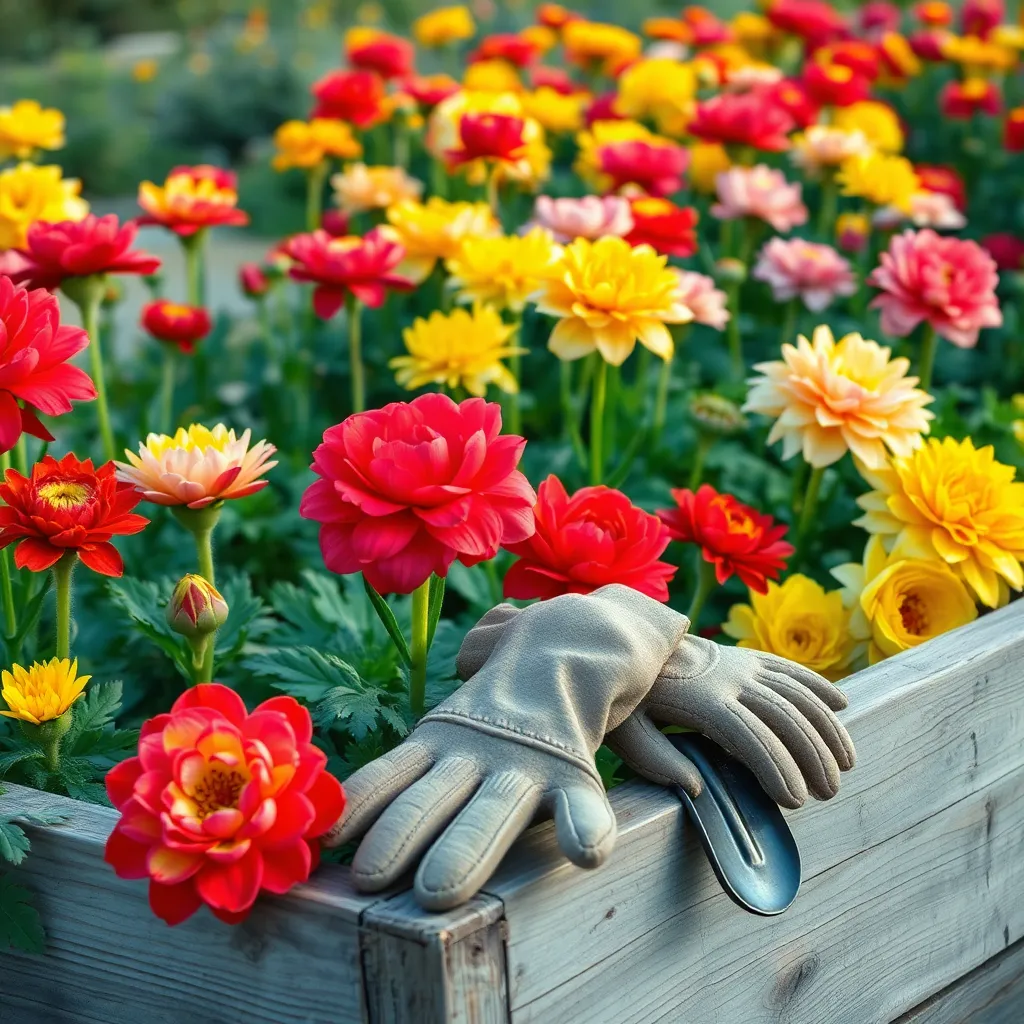
Radiant ranunculus can transform any garden with their vibrant blooms, making them an excellent choice for spring planting. To get started, plant ranunculus corms in well-draining soil enriched with compost to ensure optimal growth.
Begin planting when the risk of frost has passed, as these flowers prefer mild temperatures. For best results, soak the corms in water for a few hours before planting to encourage quicker sprouting.
Space the corms about 6 inches apart and plant them 2 inches deep, with the claws facing downward. Water the area thoroughly after planting and maintain consistent moisture, ensuring the soil does not become waterlogged.
For those looking to extend their ranunculus season, consider staggering the planting of corms every few weeks. This technique allows for a prolonged bloom period, creating a continuous display of radiant color throughout the spring.
Perennial Peonies for Perfection
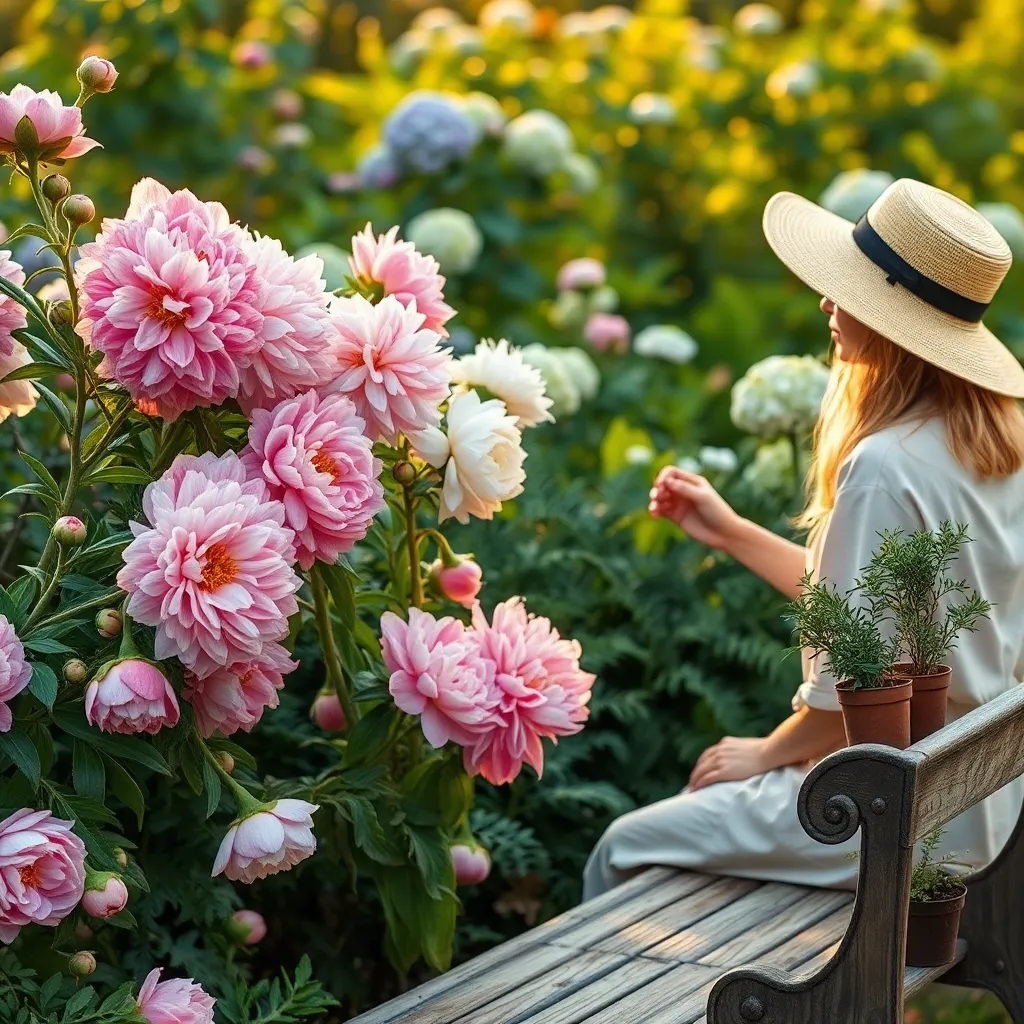
Perennial peonies are a splendid choice for gardeners seeking both beauty and low maintenance. These resilient plants thrive in well-drained soil with a neutral to slightly acidic pH, making them suitable for various climates.
To ensure your peonies flourish, plant them in full sun, providing at least six hours of direct sunlight each day. When planting, position the eyes of the peony roots no more than 2 inches below the soil surface to encourage optimal blooming.
Watering is crucial, especially in the first year; ensure they receive about 1 inch of water per week. As peonies mature, they become more drought-tolerant, requiring less frequent watering, which is ideal for gardeners who prefer low-maintenance plants.
For those looking to enhance bloom quality, consider dividing peony clumps every 5 to 10 years in the fall. This not only rejuvenates the plant but also allows you to propagate new plants for other garden areas. Regular deadheading after flowering promotes healthier foliage and prevents seed formation, directing energy back into the plant’s roots.
Sweet-Scented Hyacinths Highlight
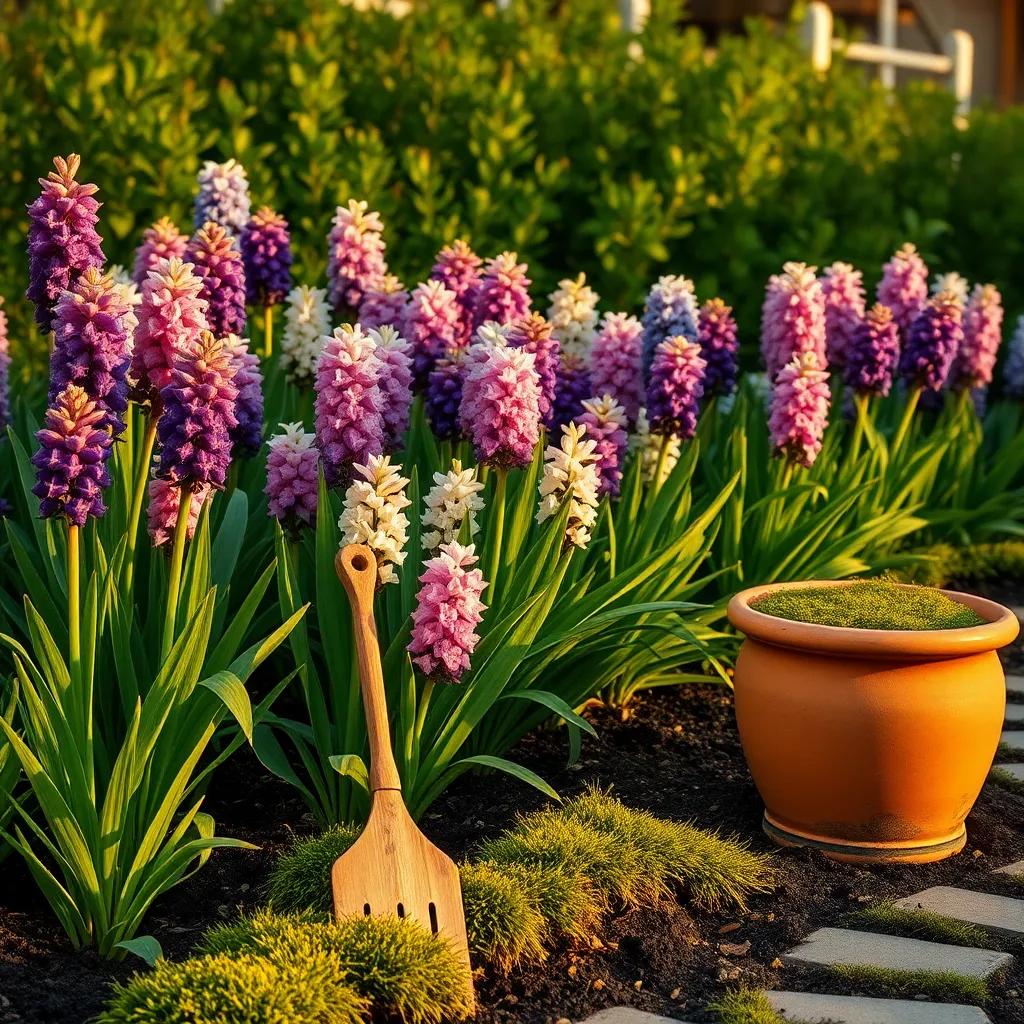
Hyacinths are a delightful addition to any spring garden, known for their vibrant colors and intoxicating fragrance. To ensure these beauties thrive, plant the bulbs in well-draining soil with a slightly sandy texture, as this mimics their native Mediterranean conditions.
When planting, place the bulbs about 4 to 6 inches deep, spacing them 3 to 4 inches apart to allow for air circulation and growth. For the best results, choose a sunny spot in your garden, as hyacinths need plenty of light to produce their characteristic blooms.
Water your hyacinths moderately, ensuring the soil remains moist but not overly saturated, especially in the early stages of growth. Once flowering begins, you can reduce watering as the plants become more drought-tolerant.
For advanced gardeners, consider applying a balanced, slow-release fertilizer in early spring to boost bloom production and enhance the vibrant hues of the flowers. Deadheading spent blooms can also help redirect the plant’s energy towards bulb development, setting the stage for an even more spectacular display the following year.
Striking Snapdragons for Style
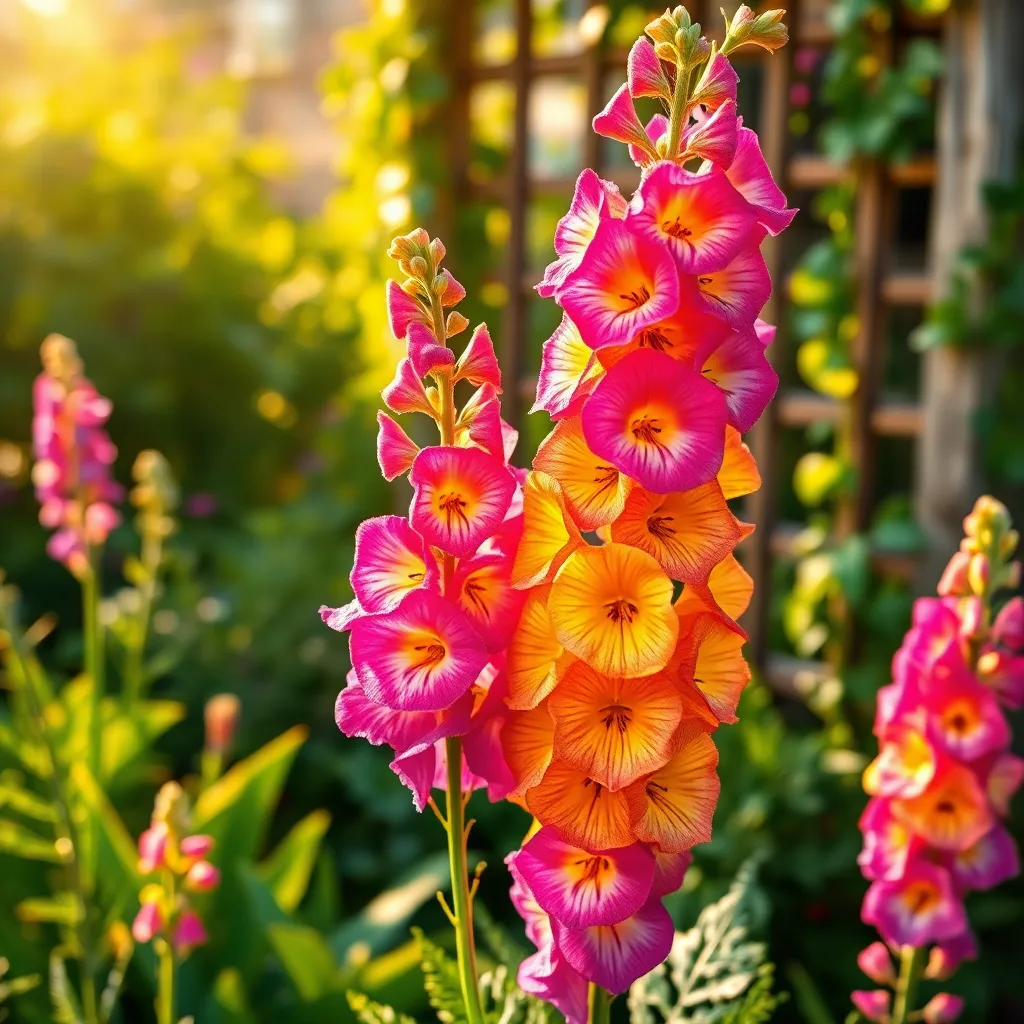
Snapdragons are a vibrant addition to any spring garden, offering a burst of color with their unique, dragon-like blooms. They thrive in well-drained soil, so incorporating organic matter like compost can enhance their growth and blooming potential.
To maximize their striking display, plant snapdragons in a location that receives full sun, as this ensures robust and healthy plants. For beginners, planting snapdragons after the threat of frost has passed is crucial, as they prefer cooler weather and may not survive a late freeze.
Watering is key to maintaining healthy snapdragons, especially during dry spells. Aim to keep the soil consistently moist but not waterlogged, as overwatering can lead to root rot.
For advanced gardeners looking to extend the blooming period, deadheading spent flowers encourages continuous growth and more blooms. Additionally, pinching back the tips of young plants can promote bushier, more compact growth, resulting in a fuller display.
Conclusion: Growing Success with These Plants
As we’ve journeyed through the vibrant world of spring blooms, each flower has unfolded a unique lesson for nurturing relationships. From the steadfast daffodil teaching us about resilience, to the nurturing embrace of tulips symbolizing love and care, and the adaptable nature of irises encouraging flexibility, these blossoms offer more than just beauty—they offer wisdom. The peony whispers of prosperity in partnership, while the hyacinth reassures us of forgiveness and renewal. Meanwhile, lilacs remind us of first love, roses of passion, and daisies of innocence and new beginnings. Lavender calms with tranquility, azaleas inspire with abundance, and the cheerful sunflowers encourage positivity and warmth.
Now, take these floral insights and plant seeds of growth in your relationships. Start by choosing one lesson and implementing it today—perhaps a gesture of appreciation or a moment of deep listening.
Remember, relationships are like gardens; they flourish with care and attention. Bookmark this article as your seasonal guide to relationship growth, and revisit it whenever you need inspiration. With the right nurturing, your relationships can blossom beautifully, paving the way for enduring connection and joy. Here’s to cultivating love that blooms perennially!

